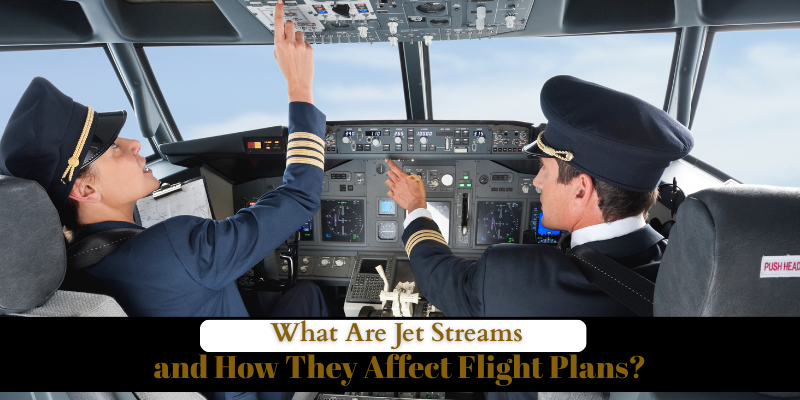
If you have ever taken a long-haul flight, you might have noticed something interesting — your travel time is often shorter in one direction and longer in the other. For example, a flight from New York to London might take around 6 hours, but the return trip can take 7–8 hours.
The reason is not just airline schedules or different routes — it’s jet streams. These invisible, fast-moving rivers of air high above the Earth’s surface play a major role in how flights are planned, how long they take, how much fuel they use, and even how comfortable they are.
In this detailed guide, we will explore:
- What jet streams are and why they form
- The different types of jet streams
- How they influence flight time and fuel consumption
- Why they sometimes cause turbulence
- How pilots and airlines use them in route planning
- How climate change is affecting jet streams
- Real-life examples of jet streams in action
- Tips for passengers when flying through jet stream regions
By the end, you will have a complete understanding of how these powerful winds shape global aviation every single day.
What Are Jet Streams?
Jet streams are narrow bands of strong winds that flow high in the atmosphere, near the boundary between the troposphere and the stratosphere — a layer known as the tropopause. They usually form between 30,000 and 40,000 feet above the Earth, which is also the cruising altitude for most commercial aircraft.
These winds can travel at speeds of 100–200 knots (about 185–370 km/h), and in some rare cases, even faster. They meander across the globe, influencing weather systems, storm patterns, and, importantly, air travel.
Why Do Jet Streams Form?
Jet streams form because of two main factors:
- Temperature differences – The biggest driver is the difference in temperature between the cold polar regions and the warm tropical regions. This temperature gradient creates differences in air pressure, which leads to strong winds at high altitudes.
- Earth’s rotation – The rotation of the Earth causes moving air to curve due to the Coriolis effect. This curving motion helps organise high-altitude winds into long, narrow currents that flow from west to east.
Types of Jet Streams
There are several types of jet streams, but the two most important for aviation are:
- Polar Jet Streams – Found in the mid-latitudes, closer to the polar regions. These are generally stronger in winter when the temperature difference between the poles and the equator is at its greatest.
- Subtropical Jet Streams – Located closer to the equator, usually around 30° latitude. These are also important for long-haul flights, especially in the Asia-Pacific region.
Other, less common types include equatorial jets and low-level jets, but these have less direct Impact on most commercial flights.
How Jet Streams Affect Flights
For pilots, jet streams are both a challenge and an opportunity.
Tailwinds vs. Headwinds
- Tailwind (Flying with the jet stream) – If a flight moves in the same direction as the jet stream, the strong winds push the aircraft forward, increasing ground speed, reducing travel time, and saving fuel.
- Headwind (Flying against the jet stream) – If a flight moves in the opposite direction, the winds slow the aircraft’s ground speed, increasing travel time and fuel burn.
For example:
- London → New York: ~7 hours (against headwinds)
- New York → London: ~6 hours (with tailwinds)
Fuel Efficiency and Cost Savings
Using jet streams effectively can save airlines thousands of litres of fuel on a single flight. This means:
- Lower operational costs for airlines
- Reduced CO₂ emissions (good for the environment)
- Increased on-time performance for passengers
Aviation route planners often design North Atlantic Tracks (NATs) every day to align with jet stream patterns, maximising fuel efficiency and minimising delays.
Flight Planning with Jet Streams
Modern flight planning is a highly technical process that takes jet streams into account. Airlines use sophisticated software to:
- Maximise time in tailwinds when flying eastward
- Minimise time in headwinds when flying westward
- Adjust cruising altitude for the best wind conditions.
- Avoid areas of known turbulence along the jet stream edges.
For instance, while crossing the Atlantic, eastbound flights often ride the fastest part of the polar jet stream, while westbound flights may choose a more southerly route to avoid headwinds.
Clear-Air Turbulence (CAT) and Jet Streams
Jet streams can also cause one of the most unpredictable and potentially dangerous phenomena in aviation — clear-air turbulence (CAT).
- Where it happens: Usually at the boundaries of jet streams, where fast-moving air meets slower-moving air.
- Why it’s dangerous: CAT is invisible on radar and can occur without clouds or storms.
- Risk to passengers: Sudden jolts can cause injuries to those not wearing seat belts.
Real example: In 1997, United Airlines Flight 826 experienced severe CAT over the Pacific near Japan, injuring passengers and crew who were caught off guard.
Tools Pilots Use to Track Jet Streams
Pilots rely on multiple tools to predict and track jet stream conditions:
- Significant weather charts – Show the position and strength of jet streams at different altitudes.
- SIGMET reports – Warnings of significant weather hazards, including turbulence.
- Satellite imagery – Monitors large-scale weather patterns influencing jet streams.
- Aircraft weather reports (PIREPs) – Real-time updates from other pilots in the air.
Climate Change and Jet Streams
Climate change is altering jet streams in several ways:
- Shifting positions – Some jet streams are moving poleward.
- Changing strength – Warming in the Arctic may weaken the polar jet stream, causing it to become wavier and more unpredictable.
- Increased turbulence – Studies suggest that CAT may become more frequent and intense in the coming decades.
This means future flights may experience greater variability in travel times and comfort levels.
Real-World Examples of Jet Stream Impact
- Record speed: In February 2020, a British Airways Boeing 747 flying from New York to London reached a ground speed of 1,327 km/h (825 mph) thanks to a powerful jet stream, completing the trip in just 4 hours 56 minutes.
- Fuel savings: Delta Airlines once reported saving over $5 million annually by adjusting transatlantic routes to take better advantage of jet streams.
Passenger Tips for Jet Stream Flights
- Always wear your seat belt – Even if the seat belt sign is off, CAT can happen suddenly.
- Understand flight times – Longer flights in one direction are often due to headwinds, not delays.
- Check the forecast – Aviation weather websites sometimes post jet stream maps you can view before flying.
Summary Table
| Factor | Effect of Jet Stream |
| Flight Time | Shorter eastbound, longer westbound |
| Fuel Efficiency | Better with tailwinds, worse with headwinds |
| Comfort | Risk of turbulence at jet stream boundaries |
| Safety Measures | Adjusting routes and altitudes |
| Environmental Impact | Helps reduce emissions when used effectively |
Conclusion
Jet streams are invisible but incredibly powerful forces in our skies. They can help planes fly faster and save fuel, but they can also cause turbulence and require complex planning to avoid delays and safety issues.
Airlines and pilots rely on advanced technology and meteorological data to use jet streams to their advantage while keeping passengers safe. So next time your flight arrives early, you might have the jet stream to thank — and if it’s delayed on the return trip, now you know why.
Frequently Asked Questions
No FAQs found.



